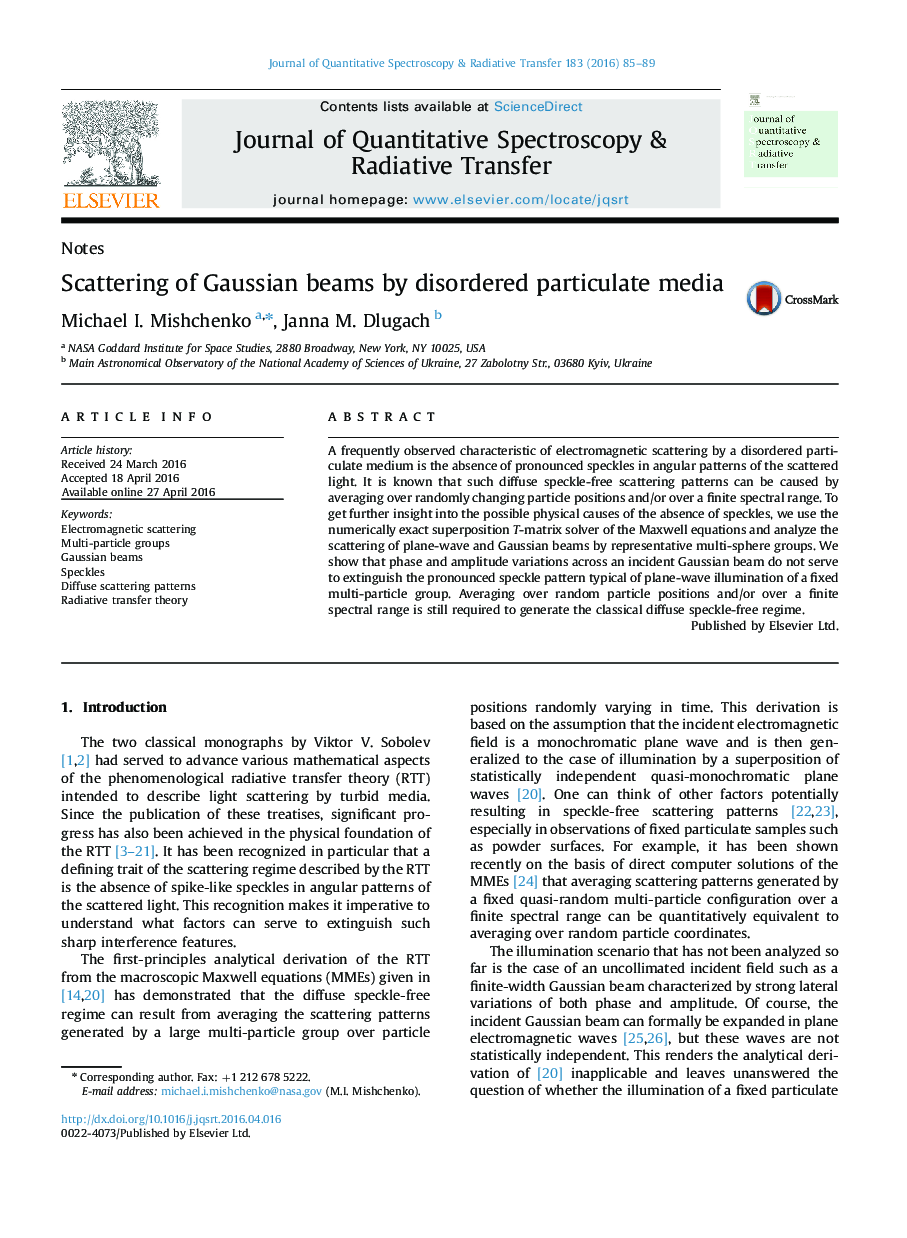| Article ID | Journal | Published Year | Pages | File Type |
|---|---|---|---|---|
| 5427513 | Journal of Quantitative Spectroscopy and Radiative Transfer | 2016 | 5 Pages |
â¢Electromagnetic scattering by a disordered particulate medium is studied.â¢The superposition T-matrix solver of the Maxwell equations is used.â¢Finite width of an incident Gaussian beam does not extinguish interference speckles.â¢Ensemble or spectral averaging is required to generate diffuse speckle-free patterns.
A frequently observed characteristic of electromagnetic scattering by a disordered particulate medium is the absence of pronounced speckles in angular patterns of the scattered light. It is known that such diffuse speckle-free scattering patterns can be caused by averaging over randomly changing particle positions and/or over a finite spectral range. To get further insight into the possible physical causes of the absence of speckles, we use the numerically exact superposition T-matrix solver of the Maxwell equations and analyze the scattering of plane-wave and Gaussian beams by representative multi-sphere groups. We show that phase and amplitude variations across an incident Gaussian beam do not serve to extinguish the pronounced speckle pattern typical of plane-wave illumination of a fixed multi-particle group. Averaging over random particle positions and/or over a finite spectral range is still required to generate the classical diffuse speckle-free regime.
